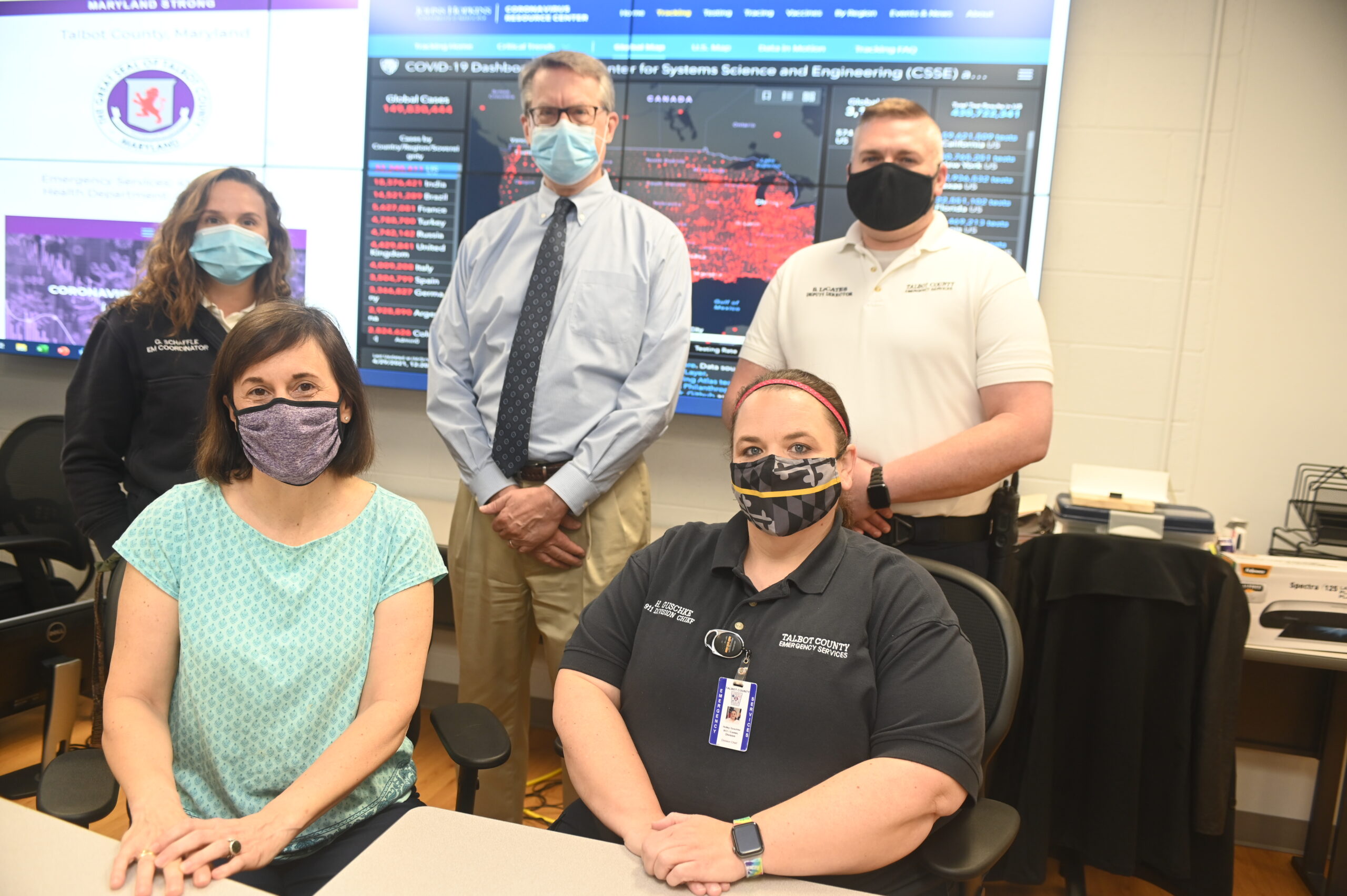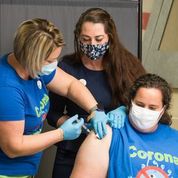
Talbot County received an Achievement Award at the National Association of Counties (NACo) Annual Convention in Adams County, Colo., on Thursday, July 21. Councilman Corey Pack accepted the award on behalf of the Talbot County Council.
The NACo awards program honors innovative, effective county government programs that strengthen services for residents. Awards were presented in 18 different categories that reflect the comprehensive services counties provide. Talbot County was honored for its forward-thinking approach to resiliency planning.

Plan for Success
Resiliency is a word that has dominated headlines since March of 2020, but Talbot County created its first Hazard Mitigation and Community Resiliency Plan in 2015, years before the coronavirus pandemic swept the globe. The COVID-19 pandemic simply put this plan to the test.
“This plan really gave us a roadmap to follow during the pandemic,” says Pack, who served as Council president through much of the pandemic. “We were able to react quickly to the dangers to the public and the business community because we had an effective plan already in place.”
When it was conceived in 2015, the joint plan was a visionary approach to hazard planning and mitigation. While FEMA encourages Emergency Services professionals to create hazard mitigation plans focused on prevention, Talbot County took the process a step further by marrying community resiliency with hazard mitigation.
According to Clay Stamp, former director of Emergency Services who now serves as Talbot County manager, we turned the planning process “upside down” by focusing on community strengths rather than weaknesses when doing hazard mitigation planning.
“We asked ourselves, ‘What event could take us down as a community?’” Stamp explains. The outcome of this process was the establishment of five community pillars, including Infrastructure, Education, Public Health and Safety, Environment, and Economic Stability.
Over the years, the strategy of focusing on community strengths has become central to implementing hazard mitigation efforts. County officials incorporated the concept into the Talbot County Comprehensive Plan, a step that added legitimacy to the initiative for broader planning.
Foundational Pillars
When the COVID-19 health emergency emerged, Talbot County leaders soon realized that the foundational pillars identified in the Hazard and Community Resiliency Plan were under attack. Officials were able to take a comprehensive approach built on the community resiliency foundation that was already in place.

The Talbot County Council took action to defend Public Health and Safety, Economic Stability, and Education. Director of Emergency Services Clay Stamp joined forces with Dr. Fredia Wadley, Talbot County’s Health Officer, to assemble a core emergency management team, with key partners responsible for supporting specific pillars. Geneva Schaffle, Talbot County’s emergency management coordinator, was the glue that held the partners together.
Responding to attack on the Public Health and Safety Pillar took center stage. In addition to disseminating credible information, Talbot County rushed to supply personal protective equipment to those on the front lines. Officials worked to address the urgent need for safe workspaces, remote connectivity, and ultimately testing, contact tracing, and vaccination support.
Calls for people to remain at home exacerbated a core need for those who were regularly dependent on donated or subsidized food services support including families and seniors. The county coordinated efforts to distribute more than 635,000 pounds of food to those in need with the assistance of seven volunteer food pantries, the Talbot County Senior Center, Neighborhood Service Center, and Talbot County Public Schools.
As COVID-19 cases surged, the effect on Talbot County’s Economic Stability Pillar came into focus. Working with the Emergency Operations Center, the Talbot County Department of Economic Development and Tourism helped create a COVID-19 website and quickly launched a “Private Sector Call” to give businesses direct access to the health officer and information on closures, changing health directives, and up-to-date financial resources.

Education was not spared by the pandemic as school closures and remote learning became commonplace. Talbot County Public Schools Superintendent worked with Easton Utilities to expand Wi-Fi services to rural areas where the signal was void. The schools also were actively involved in extending food services to underserved students who would have gone hungry, all while transitioning to online teaching.
The pandemic simply reinforced Talbot County’s commitment to the planning process, says Director of Emergency Services Brian LeCates.
“Talbot County’s Community Hazard Mitigation and Community Resiliency Plan was — and continues to be — the overarching strategy to address risk in advance of circumstances that threaten the community,” LeCates explains. “Even now, we are working to update our plan, which will include lessons from the pandemic.”
Talbot County Council President Chuck Callahan praised the county’s efforts. “Talbot County is truly a leader when it comes to excellence in emergency management,” he says. “We are proud of our employees and how they navigated the pandemic. Our residents are in good hands.”